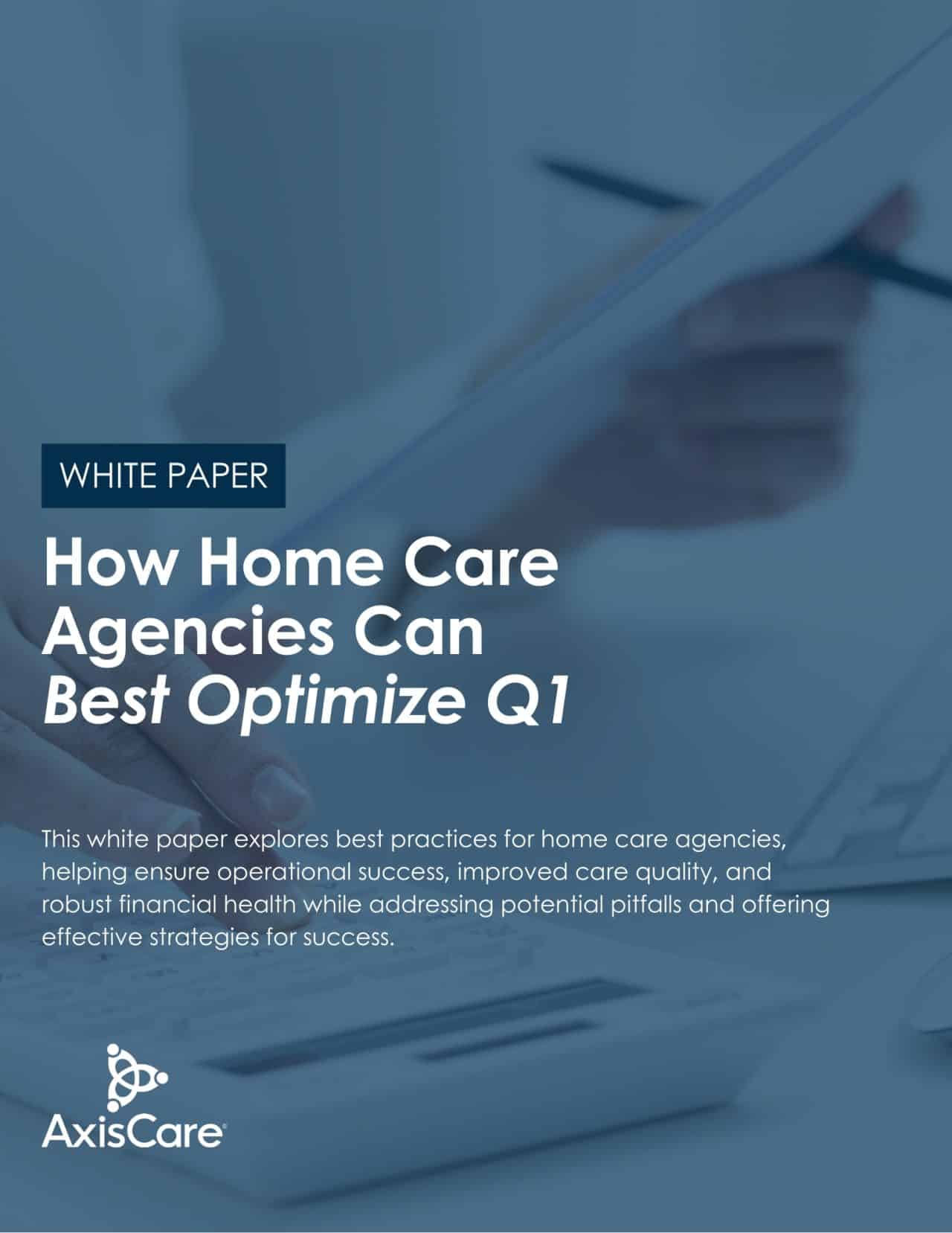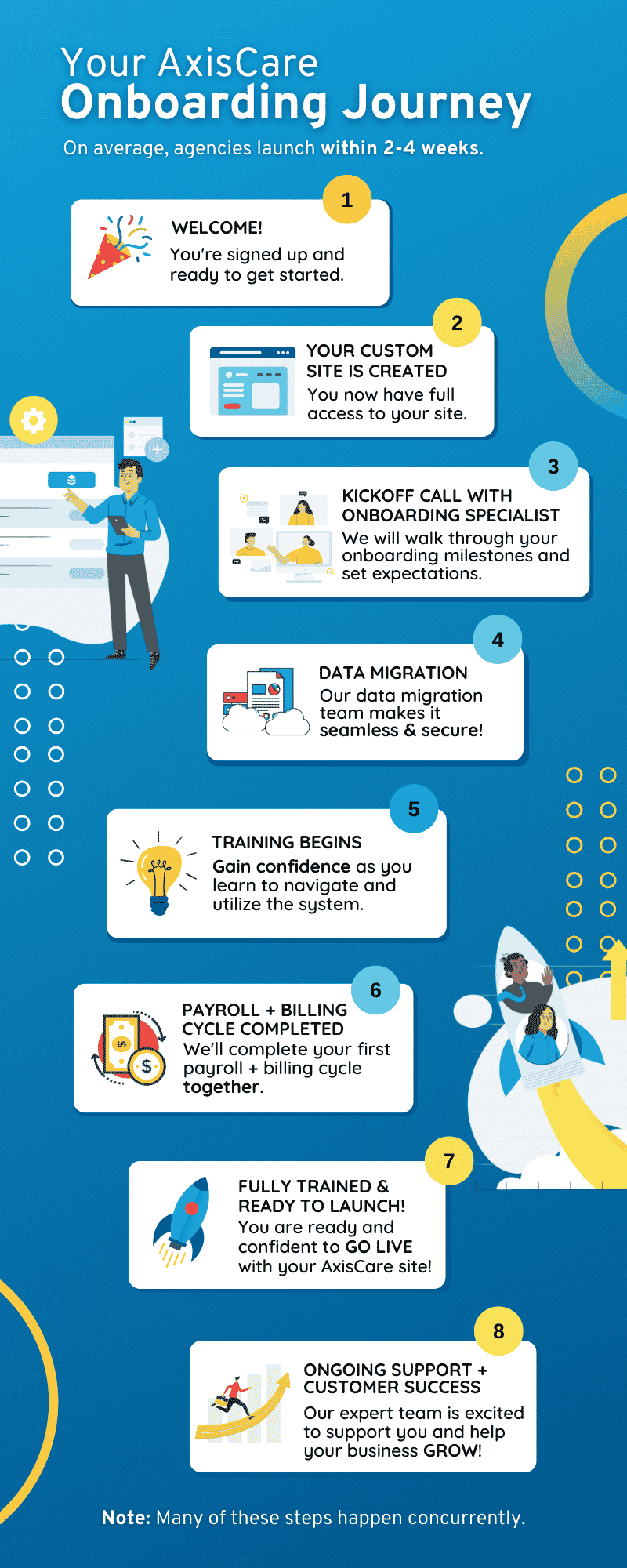How Home Care Agencies Can Best Optimize Q1
White Paper
This white paper explores best practices for home care agencies, helping ensure operational success, improved care quality, and robust financial health while addressing potential pitfalls and offering effective strategies for success.
The future of home healthcare is approaching an inflection point. By 2034, the United States will have more adults over the age of 65 than children under 18, and a strong preference for receiving medical care at home will further drive demand. At the same time as this opportunity unfolds, caregiver shortages and burnout pose challenges to agencies everywhere. To address these obstacles successfully, agencies must turn to technology. From compliance automation to clean data practices to financial wellness, there are myriad tools available to improve operations and care quality in preparation for what’s to come.
Download to continue reading…






